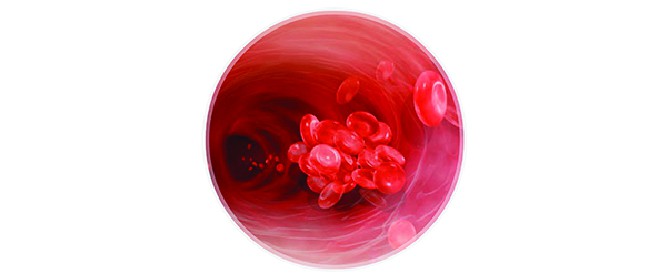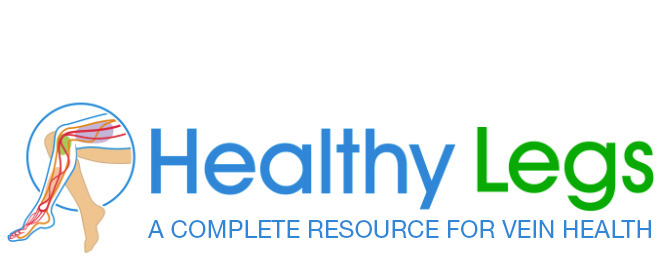
Many people with varicose veins often wonder if it’s safe for them to fly, especially for long haul flights (over 4 hours). This query is most likely due to knowledge of the risk associated with flying and Deep Vein Thrombosis (DVT). It’s important to know the difference between Deep Vein Thrombosis and varicose veins, and understand that the two are in fact separate conditions.
What is the difference between DVT and varicose veins?
Deep Vein Thrombosis (DVT) is a condition where a blood clot forms in the deep leg veins, which results when blood in the deep veins stops moving and coagulates. If the clot remains in the leg it can cause a number of complications, including inflammation (phlebitis) and leg ulcers. However, the real danger occurs when the clot travels through the bloodstream and into the lungs, where it can get stuck and cause a blockage. This is called a ‘pulmonary embolism’ and is a life-threatening condition.
Varicose veins are abnormal or ‘incompetent’ blood vessels that have become engorged and distended due to the back flow and pooling of blood. They occur in the superficial veins just under the surface of the skin and are often raised above the surrounding skin, usually becoming very visible. More information on varicose veins can be found here.
While DVT and varicose veins are both venous conditions, the two occur separately and therefore shouldn’t be confused. Varicose veins occur in the superficial veins, just under the surface of the skin, whereas blood clots tend to form in the deeper veins.
Varicose veins are abnormal or ‘incompetent’ blood vessels that have become engorged and distended due to the back flow and pooling of blood. They occur in the superficial veins just under the surface of the skin and are often raised above the surrounding skin, usually becoming very visible. More information on varicose veins can be found here.
While DVT and varicose veins are both venous conditions, the two occur separately and therefore shouldn’t be confused. Varicose veins occur in the superficial veins, just under the surface of the skin, whereas blood clots tend to form in the deeper veins.
How are DVT and varicose veins related?
There are some instances where clots do form in varicose veins and this is known as Superficial Vein Thrombosis (SVT). These clots are smaller than the clots that occur in DVT, and the condition is much less serious. The clot usually forms after an injury to the vein and can cause inflammation, tenderness, warmth and pain around the affected area. Most cases settle within 2-6 weeks and often no treatment will be needed. If the clots are associated with varicose veins, they are more likely to recur.
Depending on the severity of the condition your doctor may prescribe one or more of the following treatments:
Depending on the severity of the condition your doctor may prescribe one or more of the following treatments:
- painkillers
- anti-inflammatory creams
- physical activity
- keeping the leg raised
- compression stockings
In a small number of cases, the clot can dislodge and travel up the vein to where the deep veins join the superficial veins, potentially causing deep vein thrombosis. This is more likely if the SVT is in the upper thigh, groin or behind the knee, as this is where the superficial and deep veins meet. For this reason there is a slightly higher risk of DVT forming in people with varicose veins than in those without.
Symptoms of DVT
The most common symptom of DVT in the leg veins is cramping in the leg and a persistent aching pain. Some people may experience swelling or tenderness, or a redness and warmth around the affected area. It is also possible to have no symptoms.
Risk factors for DVT
Long haul flights increase the risk of DVT due to reduced movement, dehydration and lower cabin pressure.
Major risk factors include:
Major risk factors include:
- Recent trauma or major surgery, particularly involving the lower limbs
- Spinal cord injury
- Hip, pelvis or long bone fractures
- Cancer
- Congestive heart or respiratory failure
Minor risk factors include:
- Family history of DVT
- Previous history of DVT
- Being overweight
- Being over 40 years of age
- Pregnancy, or having just given birth
- Varicose veins
- Taking medication containing oestrogen, such as the oral contraceptive pill or HRT (hormone replacement therapy)
- Smoking
If you do have varicose veins, or any other risk factors, it’s a good idea to consult your doctor before embarking on a long haul flight so they can provide you with the correct advice. They may prescribe blood thinning medication, compression stockings, or a range of exercises.
Common advice from doctors for reducing your risk of DVT while flying:
In-flight tips
- Stay hydrated by drinking plenty of water, and limit your intake of caffeine and alcohol
- Do not take sleeping tablets, as they cause immobility
- Wear comfortable clothing that is loose fitting so it doesn’t restrict movement and/or circulation
In-flight exercises
- Bend and straighten your legs, feet and toes for 3-4 minutes every half hour
- Walk up and down the aisles for 3-4 minutes every hour, if it’s safe to do so
- Massage your calf muscles regularly
- Wriggle your toes frequently
- Sleep in short periods – up to 30 minutes at a time
Travel compression stockings
Your doctor may recommend that you wear graduated compression stockings on your flight, to go alongside the above tips. The graduated compression is tighter at the ankle and looser around the calf, which helps promote blood flow back to the heart and maintains circulation. These are usually Class I, graduated compression stockings, available from pharmacies and medical supply stores. If you already have moderate varicose veins your doctor may prescribe a higher level of compression (Class II), or possibly even higher still if you have sever varicose veins or venous ulcers (Class III).
If you do have varicose veins it’s a good idea to see your doctor, as people with varicose veins are at a slightly higher risk of developing DVT. Even if you’re not planning a long flight, seeing your doctor is a good idea to prevent your condition from worsening.
Find a doctor near you who specialises in varicose veins.
Your doctor may recommend that you wear graduated compression stockings on your flight, to go alongside the above tips. The graduated compression is tighter at the ankle and looser around the calf, which helps promote blood flow back to the heart and maintains circulation. These are usually Class I, graduated compression stockings, available from pharmacies and medical supply stores. If you already have moderate varicose veins your doctor may prescribe a higher level of compression (Class II), or possibly even higher still if you have sever varicose veins or venous ulcers (Class III).
If you do have varicose veins it’s a good idea to see your doctor, as people with varicose veins are at a slightly higher risk of developing DVT. Even if you’re not planning a long flight, seeing your doctor is a good idea to prevent your condition from worsening.
Find a doctor near you who specialises in varicose veins.









